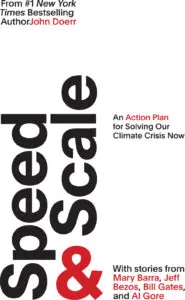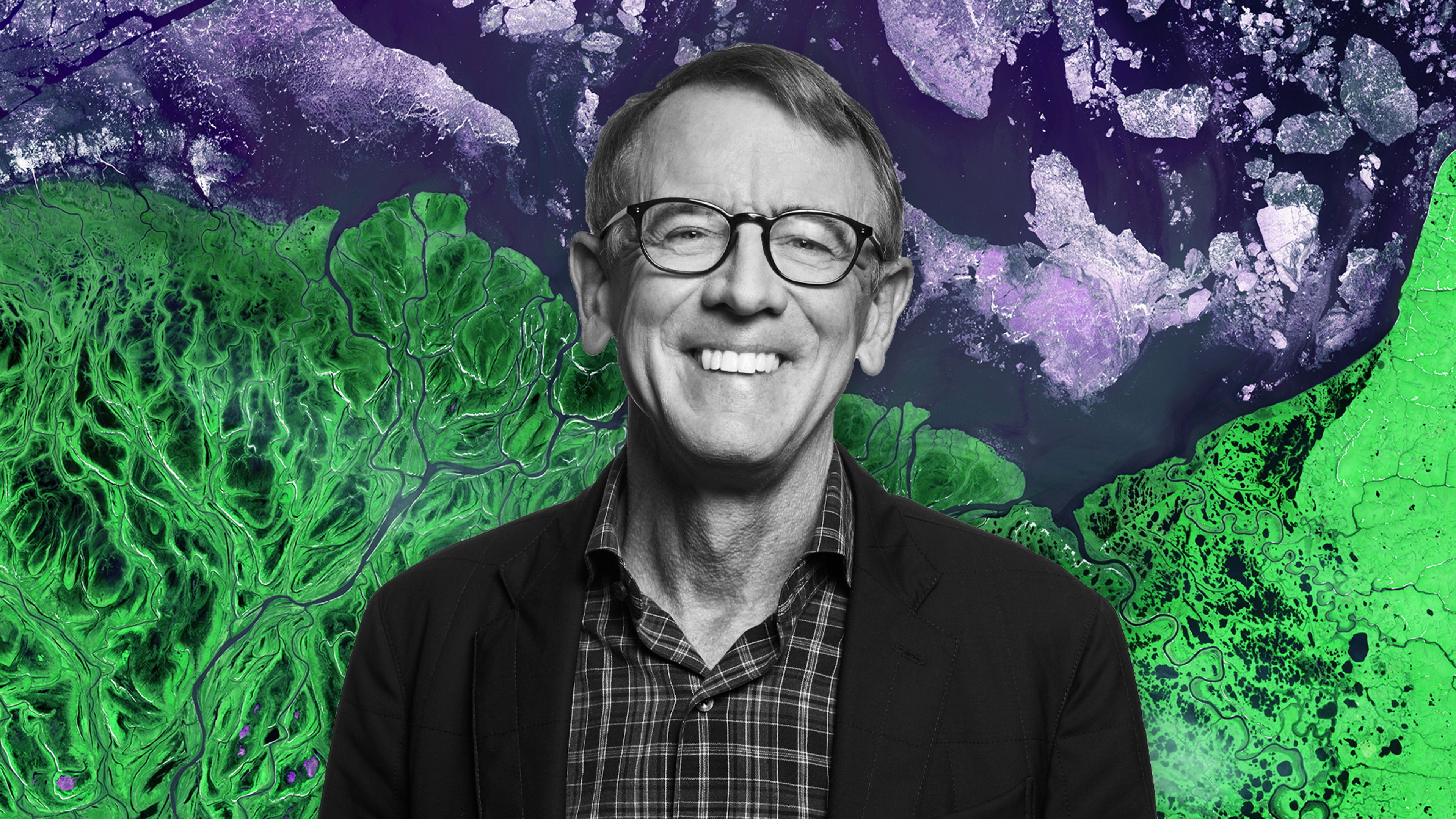In 2006, I hosted a dinner after a screening of An Inconvenient Truth, former vice president Al Gore’s seminal documentary on the climate crisis. We went around the table for everyone’s reaction to the film’s urgent message. When it came to my 15-year-old daughter, Mary, she declared with her typical candor: “I’m scared, and I’m angry.” Then she added, “Dad, your generation created this problem. You better fix it.”
The conversation stopped cold. All eyes turned to me. I didn’t know what to say.
As a venture capitalist, my job is to find big opportunities, target big challenges, and invest in big solutions. I was best known for backing companies like Google and Amazon early on. But the environmental crisis dwarfed any challenge I’d ever seen. Eugene Kleiner, the late cofounder of Kleiner Perkins, the Silicon Valley firm I’ve been with for 40 years, left behind a set of 12 laws that have stood the test of time. The first goes as follows: No matter how groundbreaking a new technology may seem, make sure customers actually want it. And this problem led me to invoke a lesser-known Kleiner law: There is a time when panic is the appropriate response.
That time has come. We could no longer afford to underestimate our climate emergency. To avert catastrophic, even possibly irreversible, consequences, we needed to act urgently and decisively. For me, that evening changed everything.
My partners and I made climate a top priority. We got serious about investing in clean and sustainable technologies—or “cleantech,” as they’re known in Silicon Valley. We even brought in Al Gore as the firm’s newest partner. But despite Al’s excellent company, my journey into the world of zero-emissions investing was pretty lonely at first. After the iPhone debuted in 2007, Steve Jobs invited us to launch our iFund for mobile apps from Apple’s headquarters. We were hearing great pitches from mobile app startups; I could see opportunities left and right.
So why commit a chunk of capital to the uncharted territory of solar panels, electric car batteries, and meatless proteins? Because it seemed like the right thing to do, for the firm and the planet. I thought the cleantech market was a monster in the making. I believed we could do well by doing good.
We pursued mobile apps and climate ventures at the same time, despite doubters on both fronts. Our mobile app investments gave us a burst of quick wins. Our climate investments were slower out of the gate, and many of them failed. It’s hard to build a durable company under any circumstances, and doubly hard to build one to take on the climate crisis.
Kleiner Perkins got beaten up in the press. But with patience and persistence, we stood by our founders. By 2019, our surviving cleantech investments had begun to hit one home run after the next. Our $1 billion in green venture investments is now worth $3 billion. But we have no time for a victory lap. As the years roll by, the climate clock keeps ticking. Atmospheric carbon already exceeds the upper limit for climate stability. At our current pace, we will blow past the 1.5-degree Celsius (2.7-degree Fahrenheit) target limit over the Earth’s preindustrial mean temperatures—the threshold, scientists say, for severe planetary damage. The effects of runaway global warming are already plain to see: devastating hurricanes, biblical-esque flooding, uncontrollable wildfires, killer heat waves, and extreme droughts.
I must warn you up-front: We’re not cutting our emissions fast enough to outrun the damage on our doorstep. I said this in 2007, and I say it today: What we’re doing is not nearly enough. Unless we course-correct with urgent speed and at massive scale, we’ll be staring at a doomsday scenario. The melting polar ice caps will drown coastal cities. Failed crops will lead to widespread famine. By mid century, a billion souls worldwide could be climate refugees.
Fortunately, we have a powerful ally in this fight: innovation. Over the past 15 years, prices for solar and wind power have plunged 90%. Clean-energy sources are growing faster than anyone expected. Batteries are expanding the range of electrified vehicles at an ever lower cost. Greater energy efficiency has sharply reduced greenhouse gas emissions.
While a good many solutions are in hand, their deployment is nowhere near where it needs to be. We’ll need massive investment and robust policy to make these innovations more affordable. We need to scale the ones we have—immediately—and invent the ones we still need. In short, we need both the now and the new.
So, where’s the plan for getting the job done? Frankly, that’s what’s been missing: an actionable plan. Sure, there are lots of ways on paper to get to net-zero carbon emissions, the point where we don’t add more greenhouse gas into the atmosphere than we can remove. But lists of goals are not plans. A long menu of options, however excellent they might be, is not a plan. Anger and despair aren’t plans; neither are hopes and dreams.
More than anything, we need a clear course of action. Yet, a plan is only as good as its implementation. To achieve this monumental mission, we’ll need to hold ourselves accountable every step of the way. That’s the great lesson I learned from my mentor, Andy Grove, the legendary CEO of Intel. It’s a mantra I’ve seen proven over and again: Ideas are easy. Execution is everything.
To execute a plan, we need the right tools. In my previous book, Measure What Matters, I outlined a simple but powerful goal-setting protocol that Andy Grove had invented at Intel. Known as OKRs, or Objectives and Key Results, they guide organizations to focus on a few essential targets, to align at every level, to stretch for ambitious results, and to track their progress as they go—to measure what matters.
Now I’m proposing we apply OKRs to solve the climate crisis, the greatest challenge of our lifetime.

The data is clear. The moment is now. I am committed to using my time, my resources, and whatever knowledge I have to work with you to build a net-zero future.
I’m not here to prod consumers to change their behavior. Individual actions are both needed and expected, but they won’t be nearly enough to reach this huge goal. Only concerted, collective, global action can get us past the finish line in time.
Entrepreneurs are those hardy individuals who do more with less than anyone thinks possible—and do it faster than anyone thinks probable. Today, bold risk-takers are innovating like mad as they rewrite the rules to avert a climate apocalypse. We need to bottle their entrepreneurial energy and distribute it as widely as we can—to governments, companies, and communities worldwide.
A plan is not a guarantee. A timely transition to a net-zero future is no sure thing. And though I may be less optimistic than some, consider me hopeful—but impatient. With the right tools and technology, with precision-honed policies—and most of all with science on our side—we still have a fighting chance. But the time is now.
John Doerr is an engineer, venture capitalist, and the chair of Kleiner Perkins.
This excerpt was adapted from Speed & Scale: An Action Plan for Solving Our Climate Crisis Now, by John Doerr, published on November 9th by Portfolio, an imprint of the Penguin Publishing Group, a division of Penguin Random House, LLC. Copyright © 2021 by Beringin Group, LLC.
Recognize your brand’s excellence by applying to this year’s Brands That Matter Awards before the early-rate deadline, May 3.
